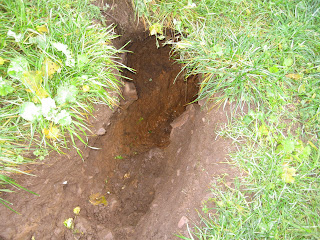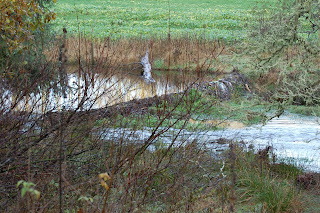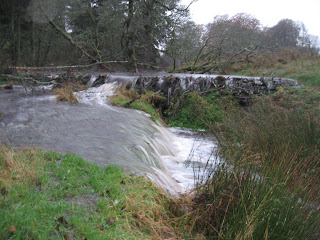 Wild boar feeding at Bamff.
Wild boar feeding at Bamff.The first wild boar came here just after the beavers in 2002.
This group, however, came here this past autumn.
 The robin (Erythacus rubecula) is a beneficiary of the wild boar. About six of the birds congregate round the boar when they are fed.
The robin (Erythacus rubecula) is a beneficiary of the wild boar. About six of the birds congregate round the boar when they are fed.
 The robin (Erythacus rubecula) is a beneficiary of the wild boar. About six of the birds congregate round the boar when they are fed.
The robin (Erythacus rubecula) is a beneficiary of the wild boar. About six of the birds congregate round the boar when they are fed. Usually they benefit from the boars' work, turning over the ground to reveal the larvae of various invertebrates, but here feeding time seems to bring in the robins.
 Until the last few days when it has been relatively cold (around -6ºC over night) the beavers were active, felling trees.
Until the last few days when it has been relatively cold (around -6ºC over night) the beavers were active, felling trees.
 I took this photograph some days ago. You can see how the beavers have kept the waterway open to the other side of the pond.
I took this photograph some days ago. You can see how the beavers have kept the waterway open to the other side of the pond.
 Until the last few days when it has been relatively cold (around -6ºC over night) the beavers were active, felling trees.
Until the last few days when it has been relatively cold (around -6ºC over night) the beavers were active, felling trees. For the last three nights, at least, they have not ventured into the stubble turnip field. This surprises me a bit because I should have thought that, energetically speaking, it would have been worth the beavers' efforts to go out into the field to graze the turnips.
 I took this photograph some days ago. You can see how the beavers have kept the waterway open to the other side of the pond.
I took this photograph some days ago. You can see how the beavers have kept the waterway open to the other side of the pond. The middle of the water is frozen over now.

















































